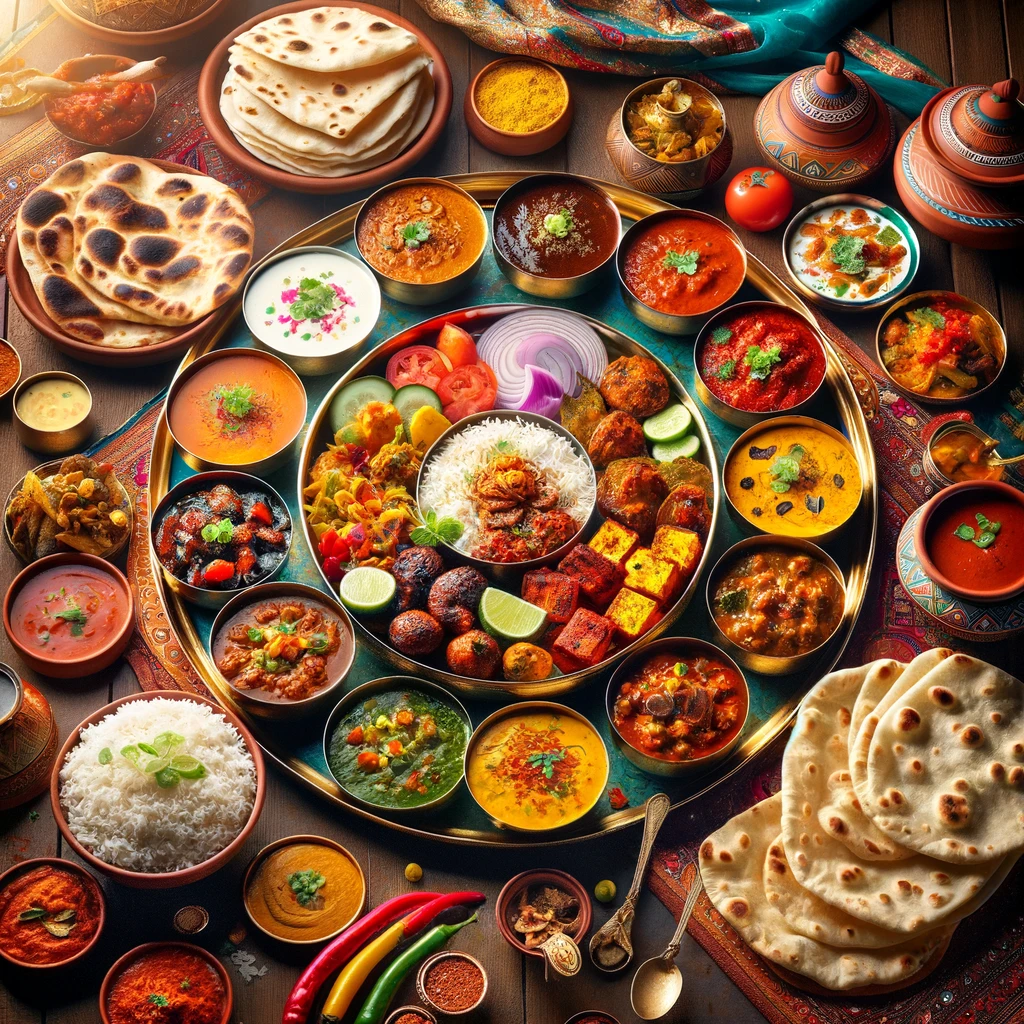Introduction
India, a land of diverse cultures, languages, and traditions, boasts a culinary landscape as vibrant and varied as its people. Indian cuisine is renowned worldwide for its intricate flavors, aromatic spices, and regional specialties that reflect the country’s geographical and cultural diversity. From the fiery curries of the south to the aromatic biryanis of the north, Indian food is a testament to centuries of culinary evolution and fusion.
Diversity in Indian Cuisine
One of the most striking features of Indian cuisine is its diversity, which is a result of the country’s vast geographical expanse and rich cultural heritage. Each region of India has its own distinct culinary traditions, influenced by factors such as climate, topography, religion, and historical interactions.
In the north, the cuisine is characterized by rich, creamy gravies, and tandoori delicacies. Punjabi cuisine, in particular, is famous for its buttery naan bread, succulent kebabs, and hearty vegetarian dishes like chole bhature (spiced chickpeas with fried bread). Uttar Pradesh offers delectable kebabs and succulent dum biryanis, while Rajasthan boasts a repertoire of fiery curries and savory snacks like dal bati churma.
Moving towards the south, the cuisine takes on a different character, with a greater emphasis on rice, coconut, and seafood. In Kerala, the land of coconuts, one can savor dishes like appam (fermented rice pancakes) served with creamy coconut milk-based stews and seafood delicacies like fish molee (fish cooked in coconut milk). Tamil Nadu is known for its aromatic sambar (a lentil-based vegetable stew) served with idli or dosa, while Andhra Pradesh offers spicy and tangy preparations like Hyderabadi biryani and fiery chicken or mutton curries.
In the west, the cuisine of Gujarat is predominantly vegetarian, with dishes like dhokla (steamed fermented rice cakes), thepla (spiced flatbread), and undhiyu (a mixed vegetable curry) showcasing the region’s culinary diversity. Maharashtra, on the other hand, offers a mix of vegetarian and non-vegetarian delights, with Mumbai street food like pav bhaji (spiced mashed vegetables served with buttered bread rolls) and vada pav (deep-fried potato dumplings in a bun) being iconic.
The eastern part of India boasts its own unique culinary heritage, with Bengal renowned for its fish preparations, especially the quintessential Bengali fish curry cooked with mustard oil and flavored with nigella seeds. Odisha offers a variety of seafood delights, along with vegetarian dishes like the famous dalma (a lentil and vegetable stew) and pakhala bhata (fermented rice soaked in water).
Common Ingredients and Spices
Central to Indian cuisine are the plethora of spices and herbs that lend depth, complexity, and aroma to dishes. Some of the most commonly used spices include cumin, coriander, turmeric, cardamom, cloves, cinnamon, and red chili powder. These spices are often ground and combined in various proportions to create flavorful spice blends, such as garam masala, which is used extensively in Indian cooking.
Other essential ingredients include lentils, rice, wheat, vegetables, dairy products like yogurt and ghee (clarified butter), and a variety of meats and seafood. Coconut, both fresh and in the form of coconut milk, is widely used in southern Indian cuisine, adding a rich, creamy texture to many dishes.
Regional Influences and Culinary Traditions: Indian cuisine has been shaped by centuries of trade, migration, and cultural exchange, resulting in a rich tapestry of culinary traditions. The Mughals, who ruled India for several centuries, left an indelible mark on Indian cuisine, introducing techniques like slow cooking (dum), as well as ingredients like saffron, nuts, and dried fruits. The Portuguese, who arrived in India in the 15th century, brought with them ingredients like tomatoes, potatoes, and chili peppers, which have since become integral to Indian cooking.
Religion also plays a significant role in shaping culinary practices in India. Hinduism, with its emphasis on vegetarianism, has led to the development of a vast array of vegetarian dishes, from simple dal (lentil curry) to elaborate vegetable curries and stuffed bread like paratha. In contrast, Islamic dietary laws have influenced the development of rich meat-based dishes like biryani and kebabs.
Conclusion
Indian cuisine is a reflection of the country’s rich cultural heritage, geographical diversity, and culinary innovation. From the aromatic spices of the north to the coconut-infused dishes of the south, each region of India offers a unique gastronomic experience. Whether you’re savoring a street food snack in Mumbai or indulging in a royal feast in Rajasthan, Indian food never fails to tantalize the taste buds and captivate the senses. So, embark on a flavorful journey through the diverse and delicious world of Indian cuisine, and discover the magic of spices, flavors, and traditions that make it truly extraordinary.
